ISL for Interns, Residents, and Fellows
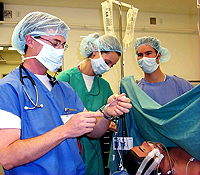
The CISL faculty have had a very strong pioneering presence in using ISL to teach many different aspects of the specialty practice of medicine to advanced trainees – interns, residents, and fellows (collectively known as “housestaff”). These doctors are in years long programs to learn the detailed skills and knowledge of medical specialists.
Traditionally, most of their training has been apprenticeship-style – taking care of patients under the supervision of experienced faculty specialists. In many departments ISL now provides a substantial addition to traditional training, filling gaps that are otherwise hard to address. ISL is particularly important in fields that involve invasive and hazardous work, including surgery, anesthesia, intensive care, neonatology, emergency medicine, and obstetrics and gynecology. The simulation-based curricula for housestaff include:
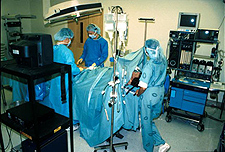
Anesthesiology: Four day-long simulation courses (2 in year one of residency, and 1 each in years two and three) on Anesthesia Crisis Resource Management (ACRM), teaching both generic skills of crisis management and specific medical elements of life-threatening situations. A half-day NEOSIM course (see below) on CRM for neonatal resuscitation; a half-day OBSIM course – combined team exercises in perinatal emergencies along with obstetricians and OB nurses.
Residents and ICU fellows participate in ICU-CRM (also known as Improving the Management of Emergency Patient Situations – IMPES), a half-day combined team simulation session of challenges of critically ill patients. Anesthesia residents also use part-task simulators of regional anesthesia and of airway management.
For more information on Anesthesia resident courses that are available at Stanford, please click here.
Internal Medicine: Medicine interns take the 2 hour simulation-based Stanford Course on Active Resuscitation, Evaluation, and Decision-making (SCARED) as well as periodic simulation refreshers in the SOS course.
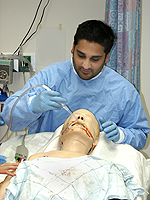
Medicine interns and residents take part in the combined-team ICU-CRM course along with residents from anesthesia & surgery, as well as nurses, respiratory therapists, and pharmacists. A program of part-task training on invasive procedures such as central venous line placement is in place.
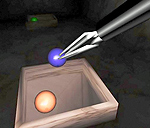
Surgery: Surgery interns also take the SCARED-surgery course. Surgical interns and residents also use surgical and procedural simulators to practice laparoscopic surgery, endovascular procedures in vascular surgery, and other key invasive procedures. New curricula for surgical housestaff will be unveiled in the new Goodman Simulation Center of the Department of Surgery.
Neonatology: Pediatrics residents and fellows take the NEOSIM simulation course, and certain fellows take special simulation training on “Extracorporeal Membrane Oxygenation” (ECMO – essentially a temporary artificial lung for critically ill newborns).
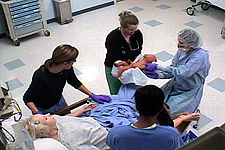
Obstetrics: OB residents take the OBSIM course along with colleagues from anesthesia and nursing.
Emergency Medicine: Emergency medicine residents have a sequence of half-day simulation based EMCRM courses. EMCRM is unique in two ways – i) as befits an Emergency Department, there may be more than one simulated patient to manage simultaneously; ii) an ethical or professionalism challenge is embedded into many of the scenarios.

